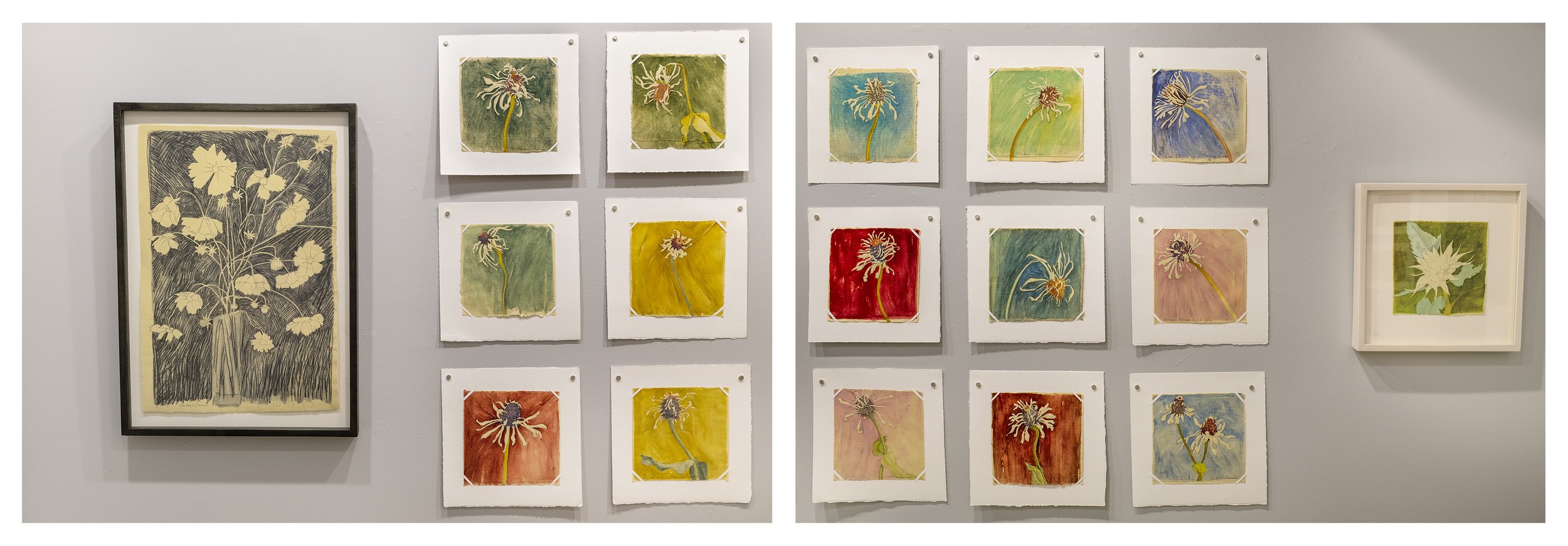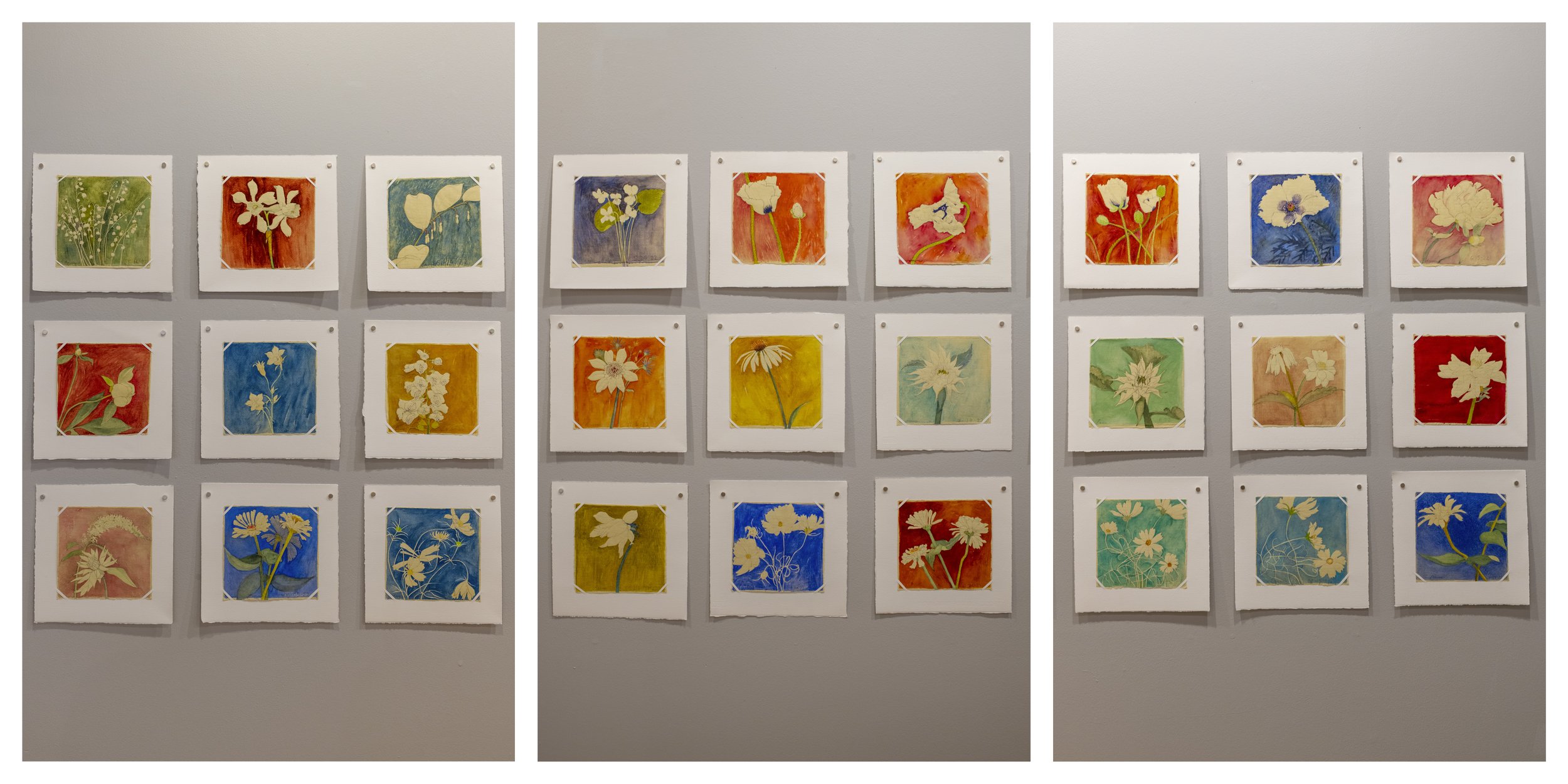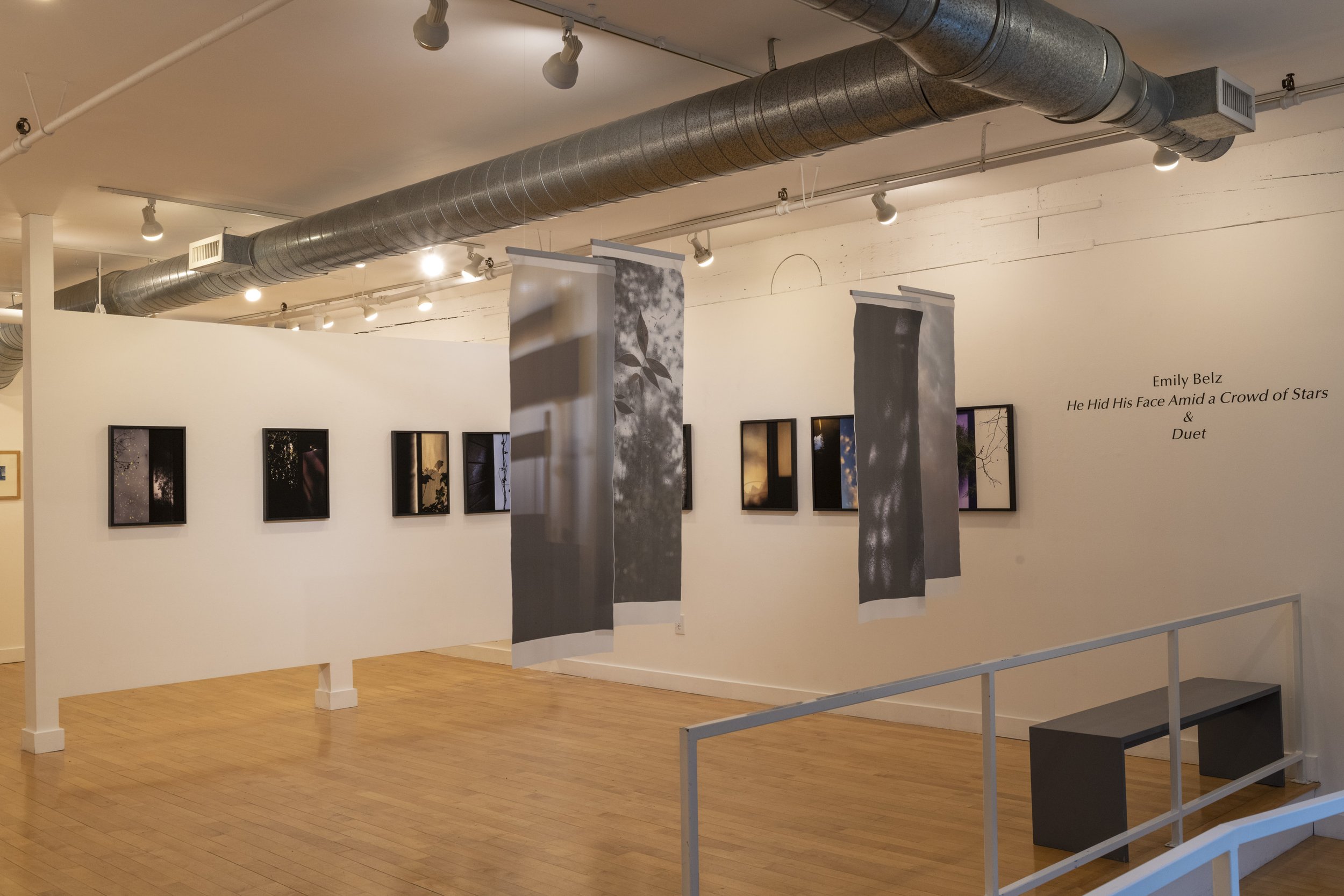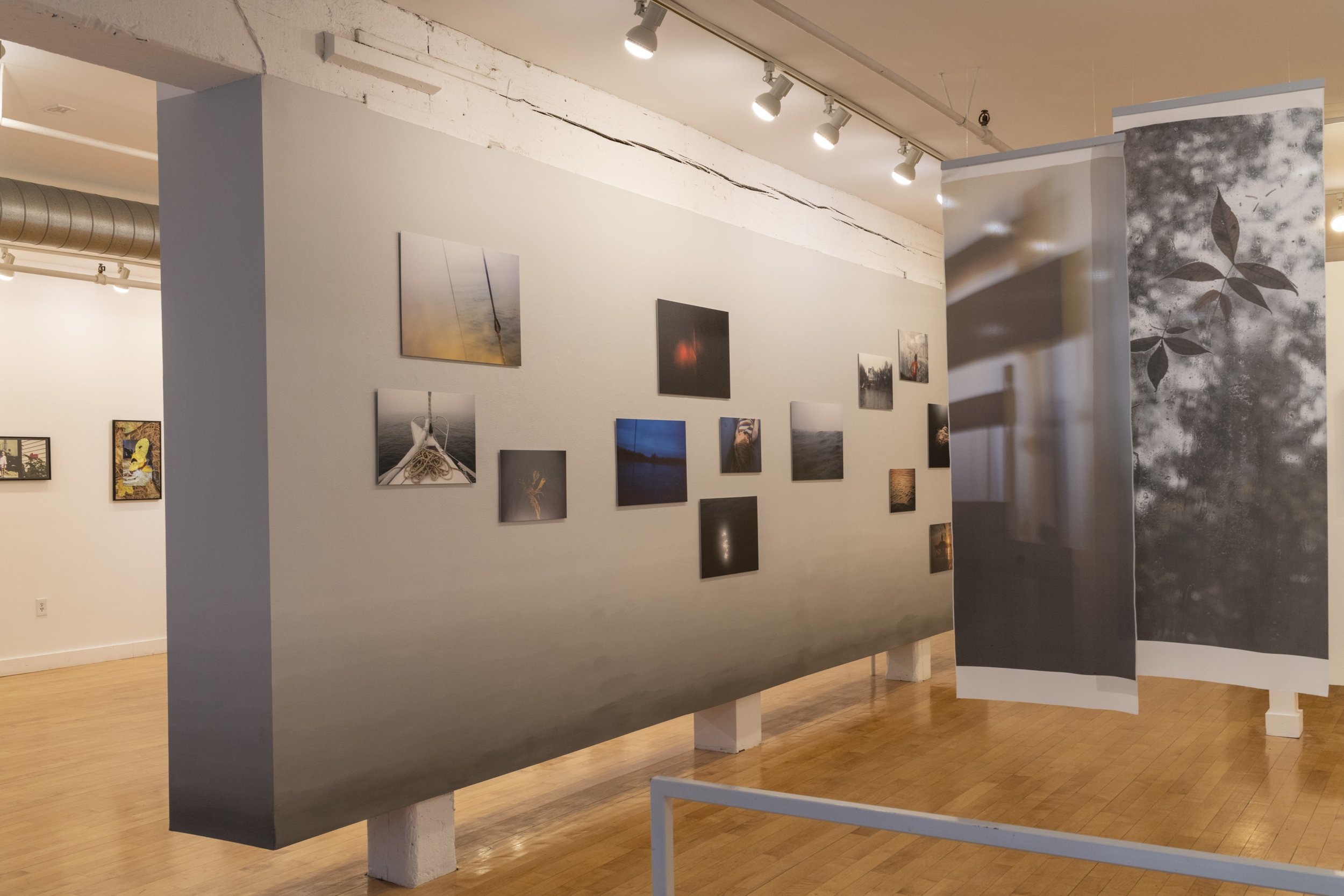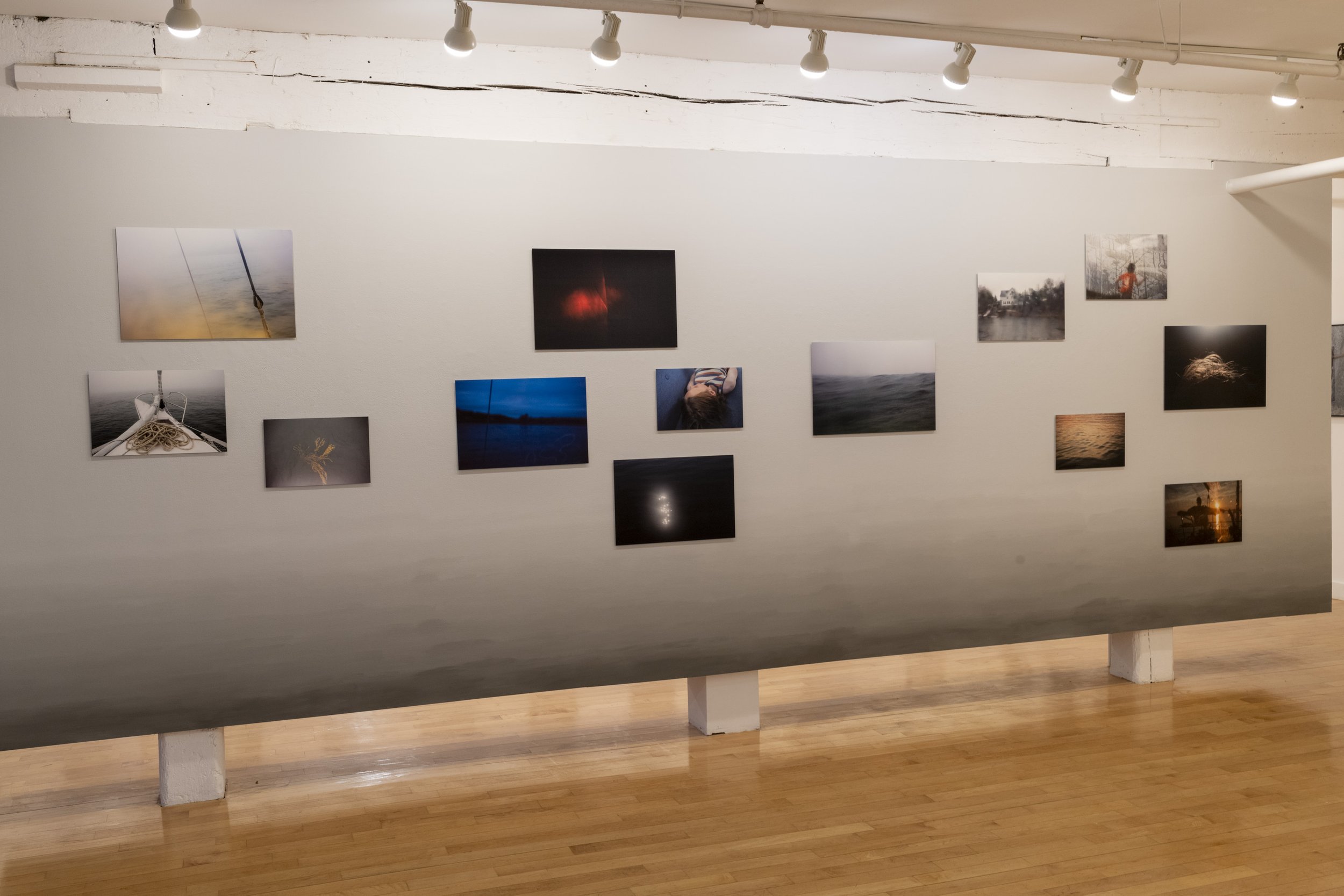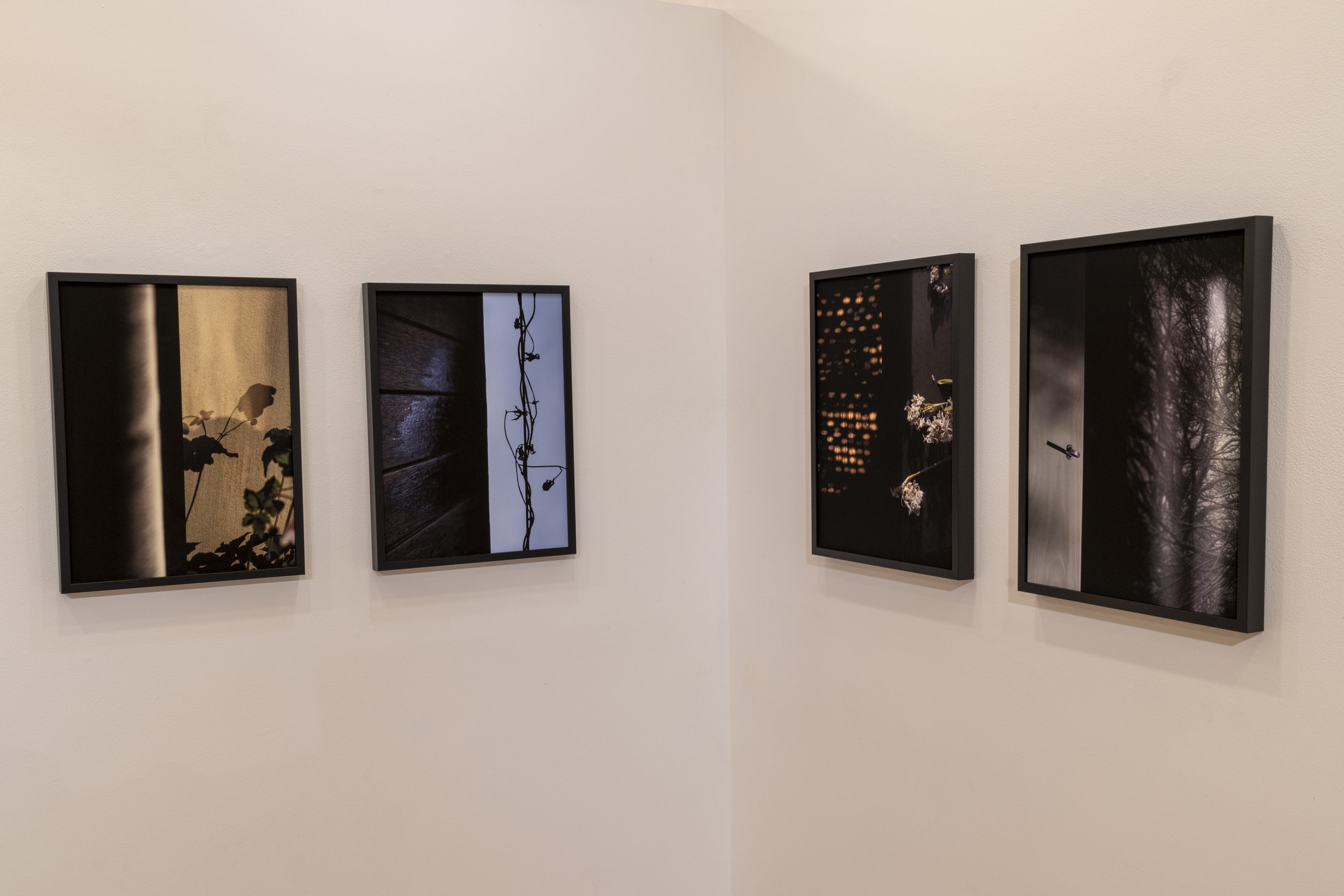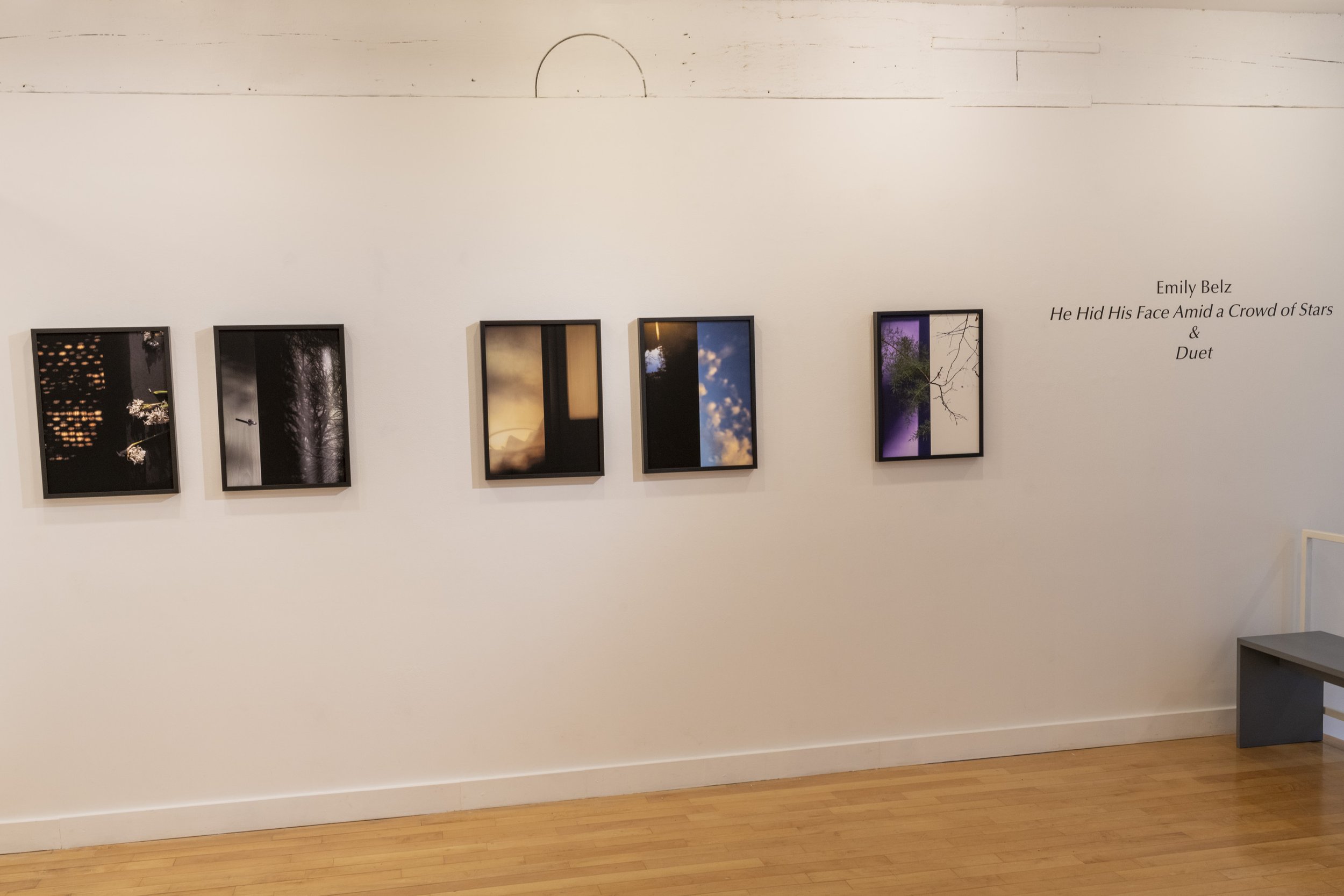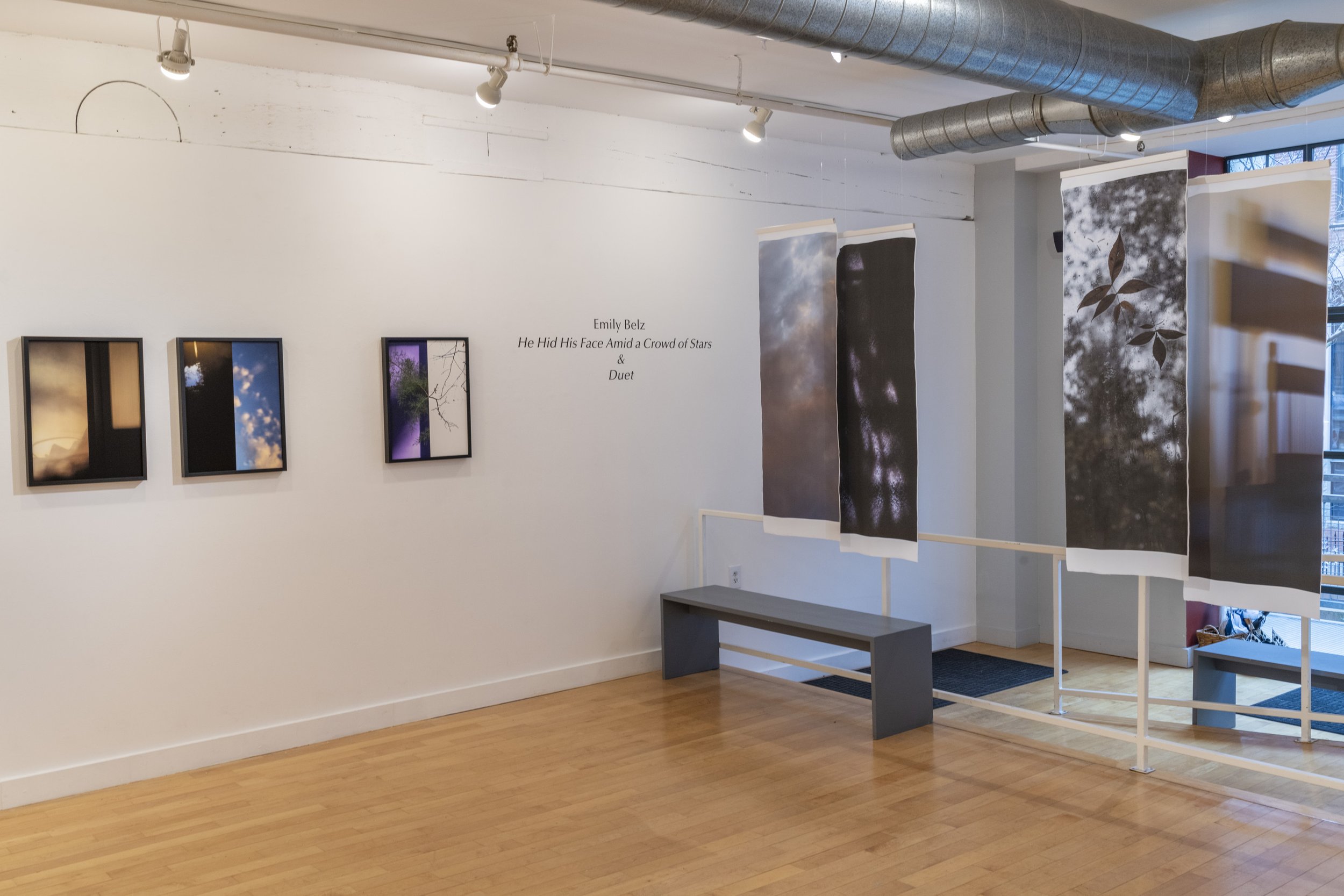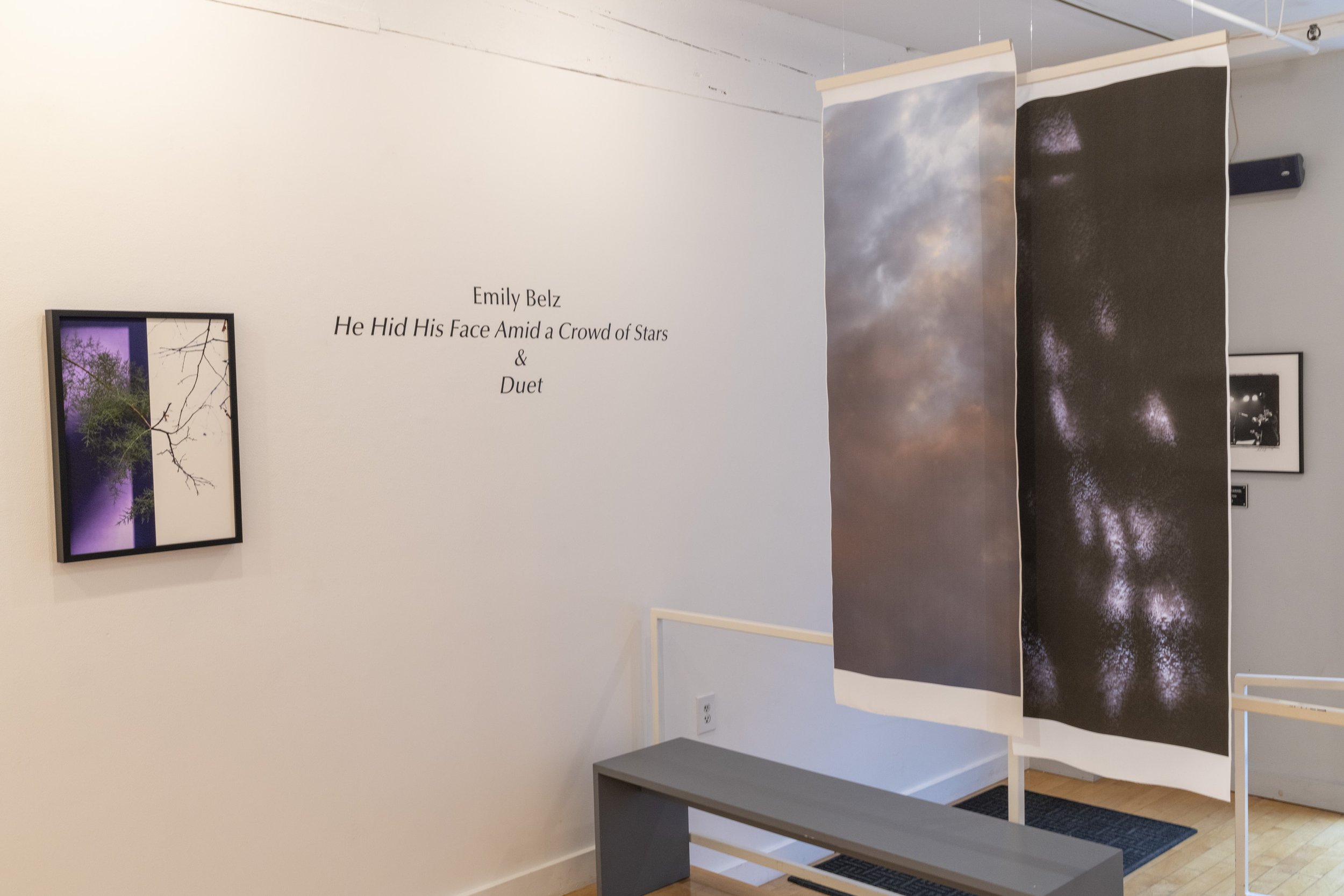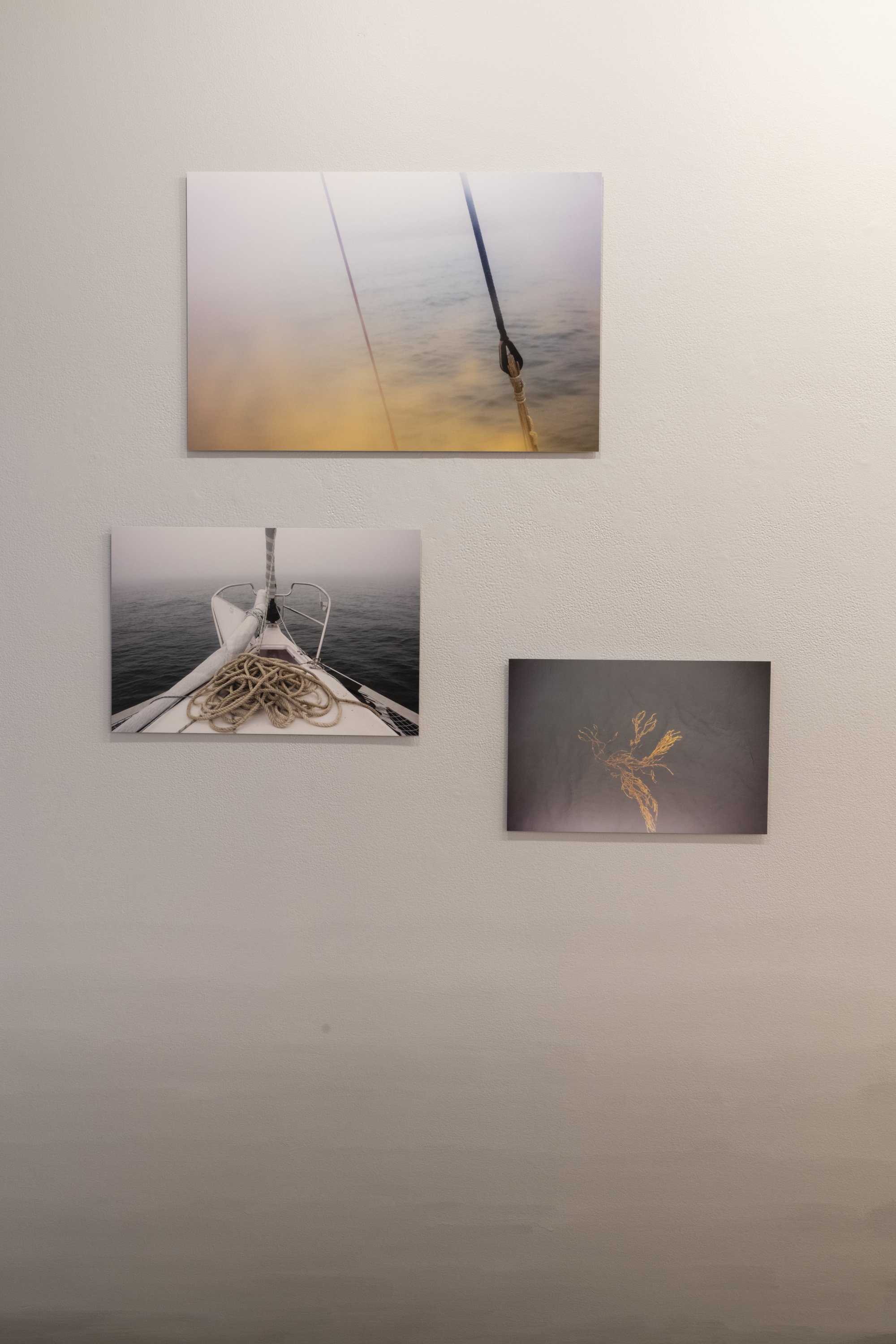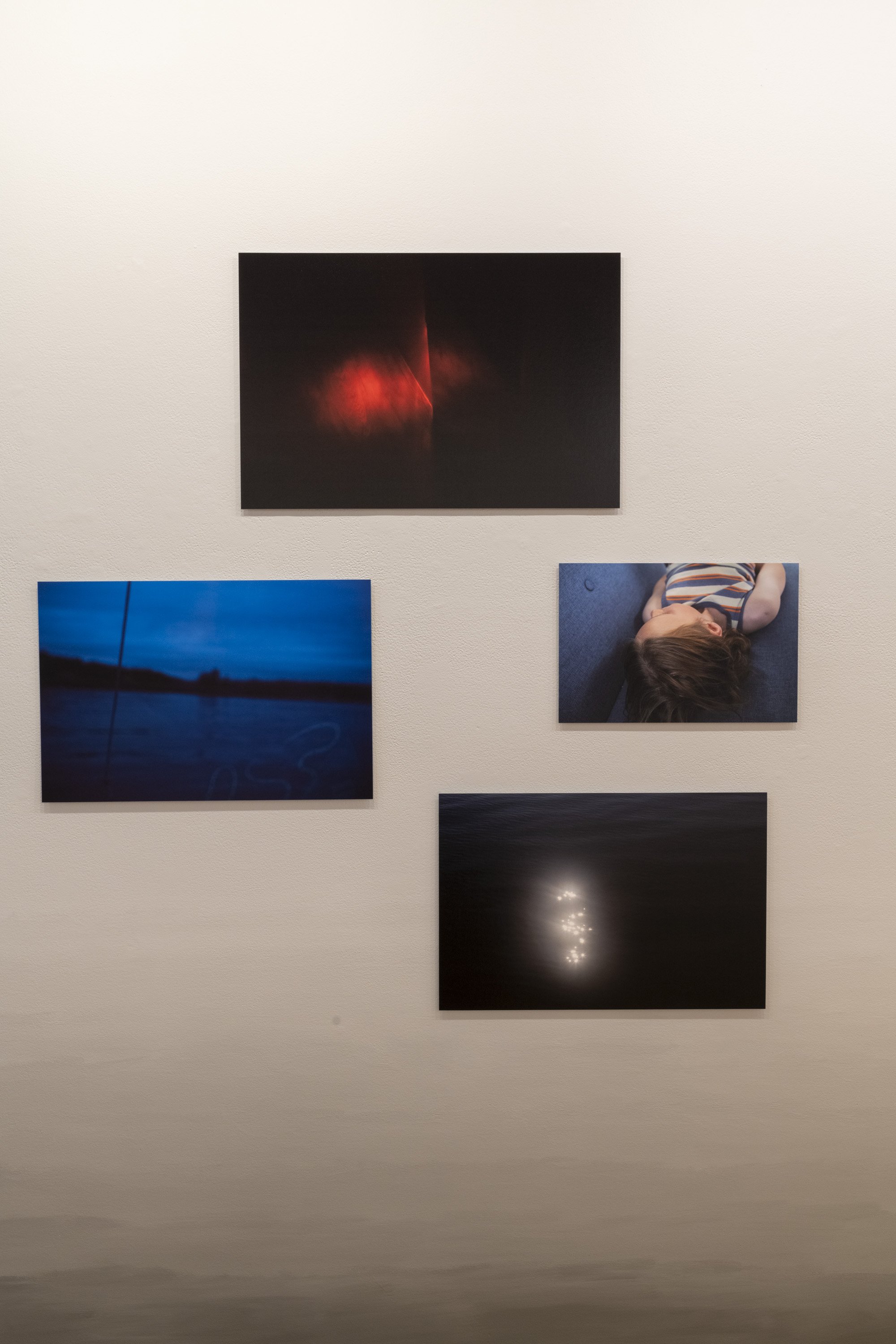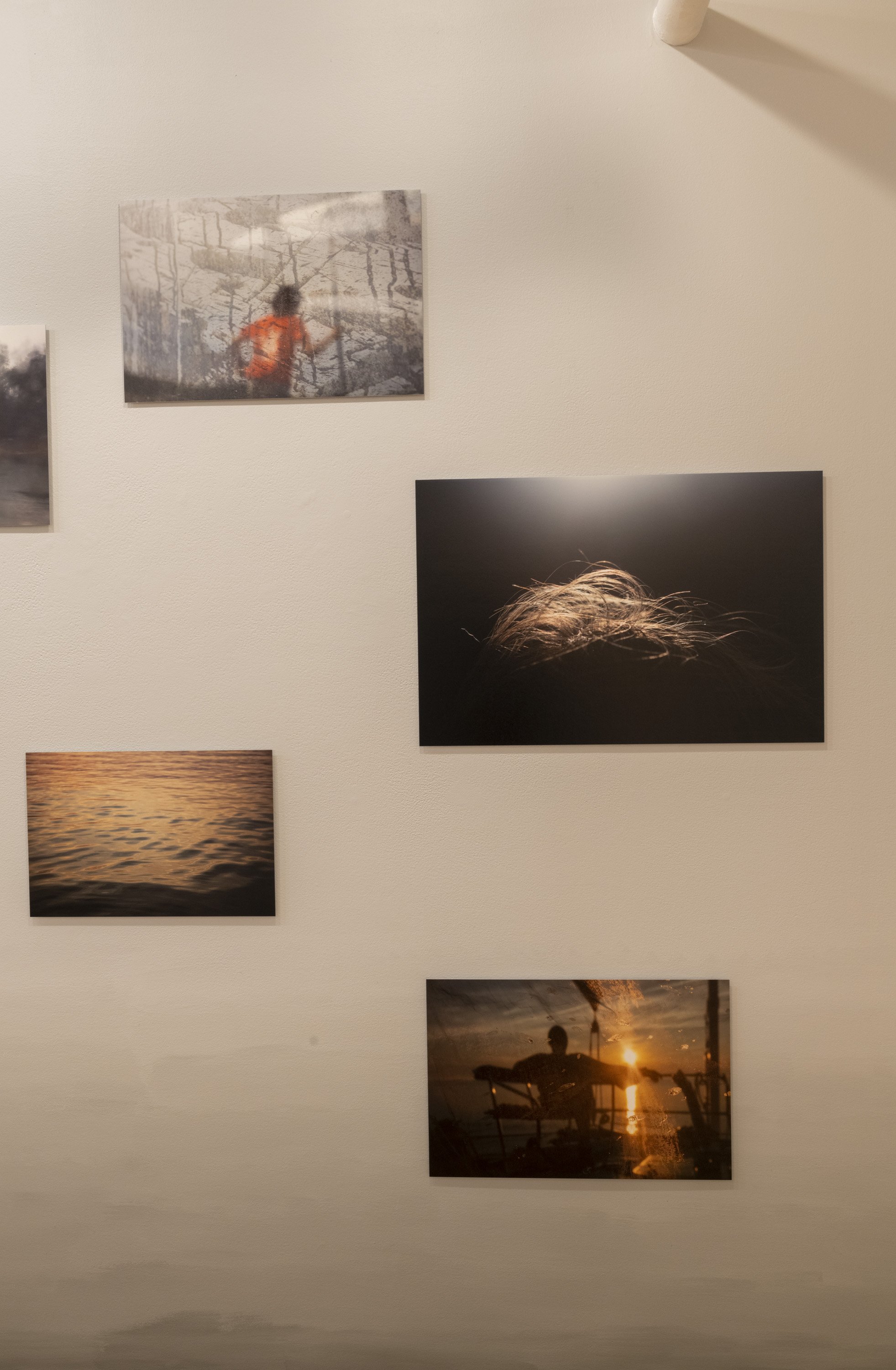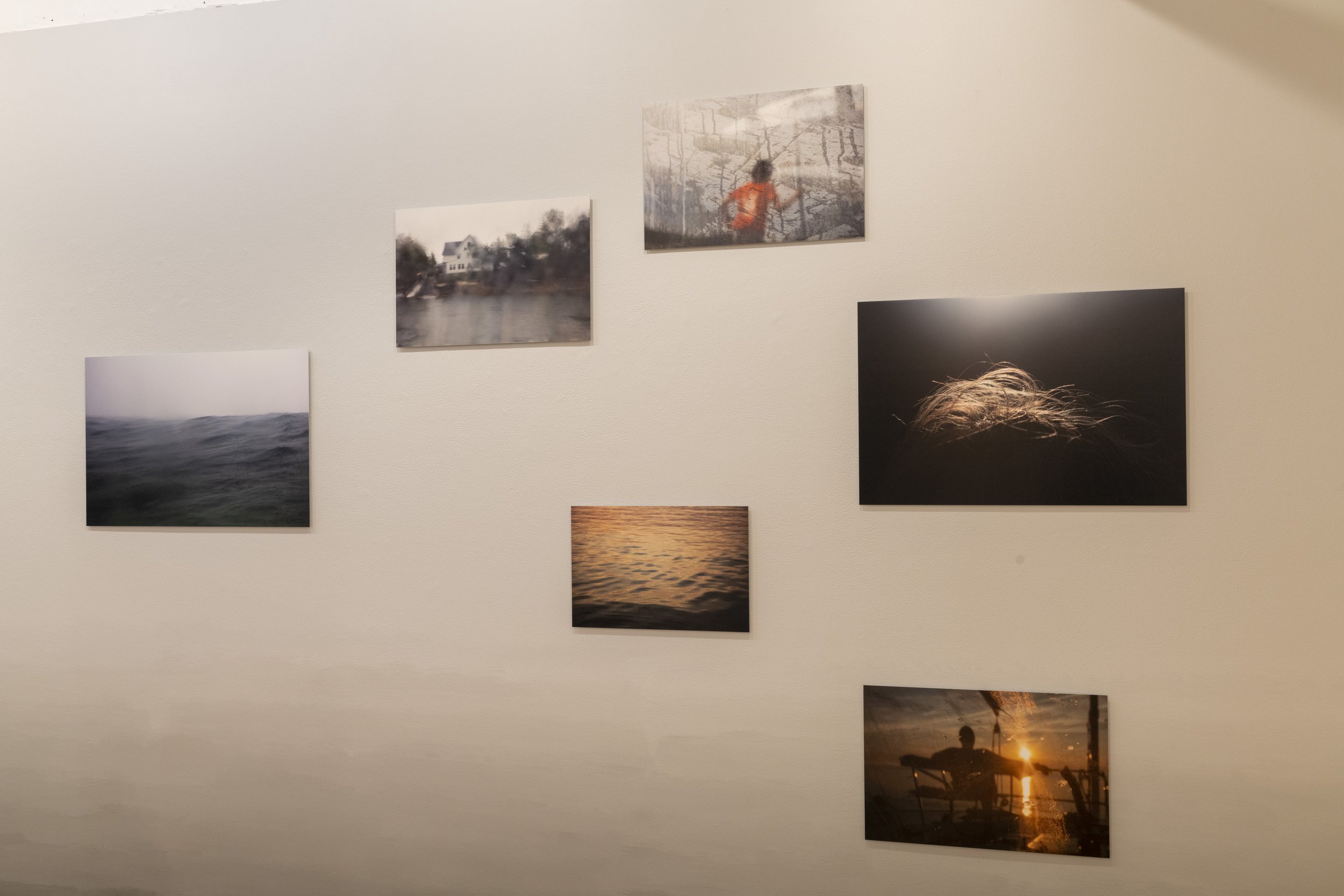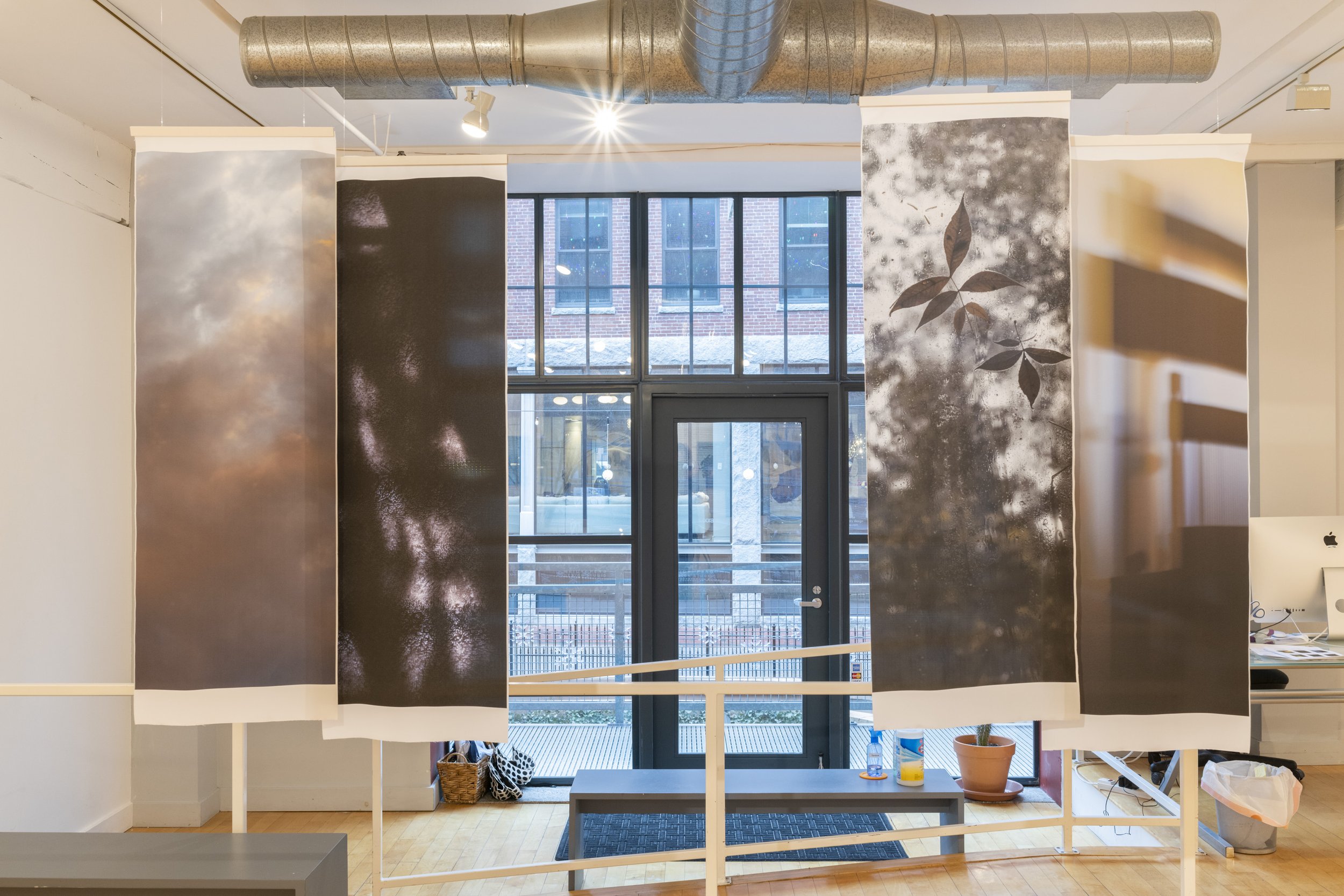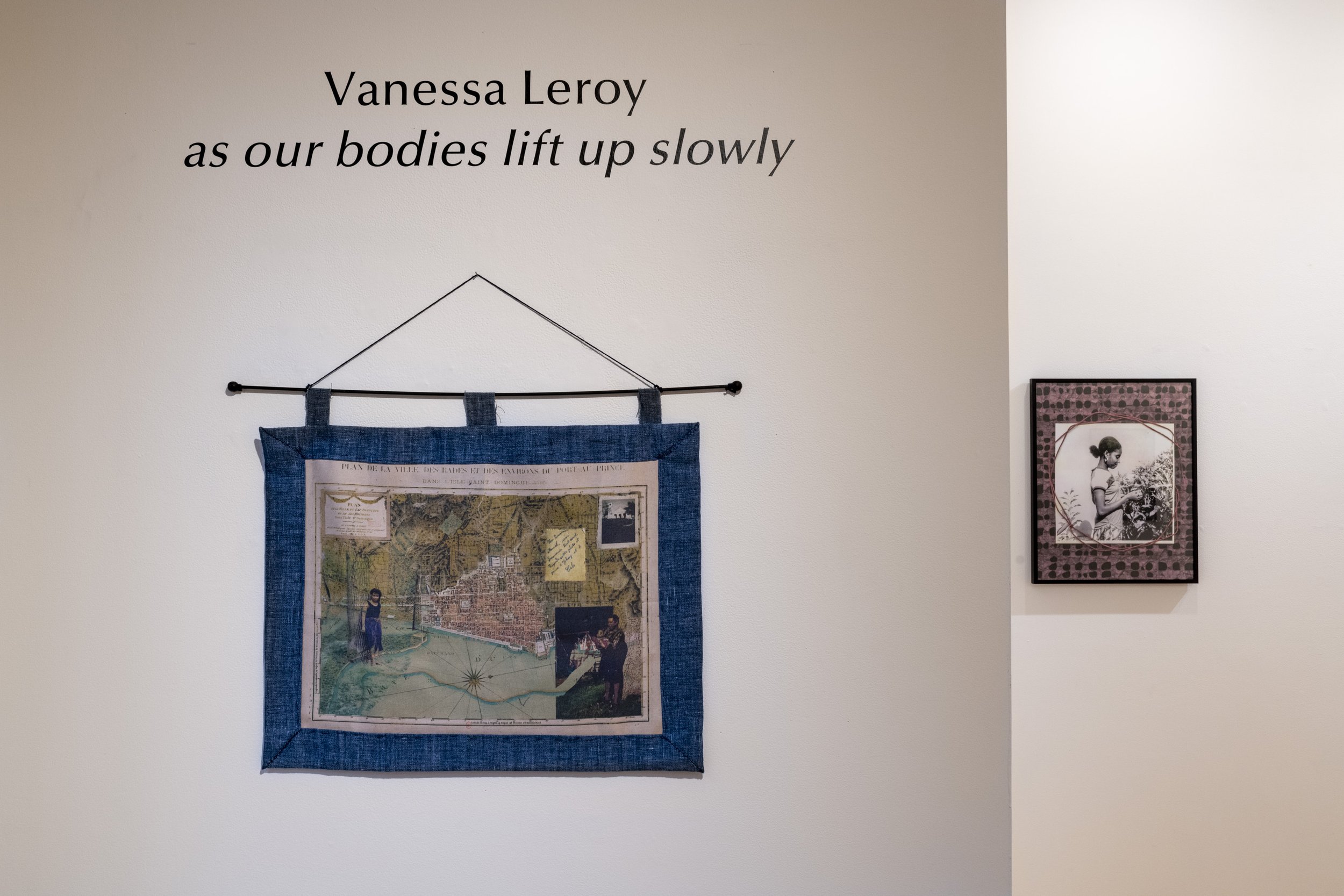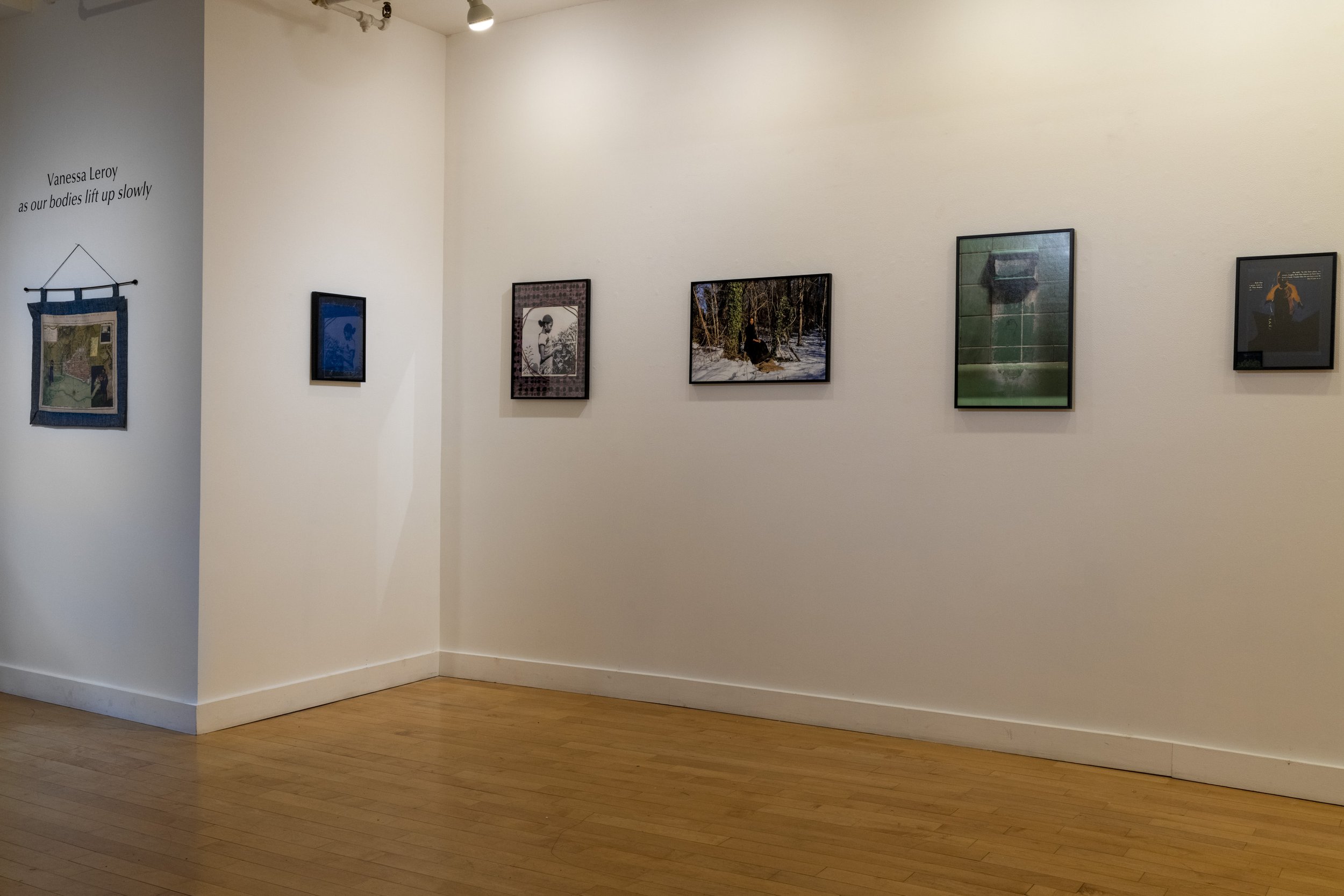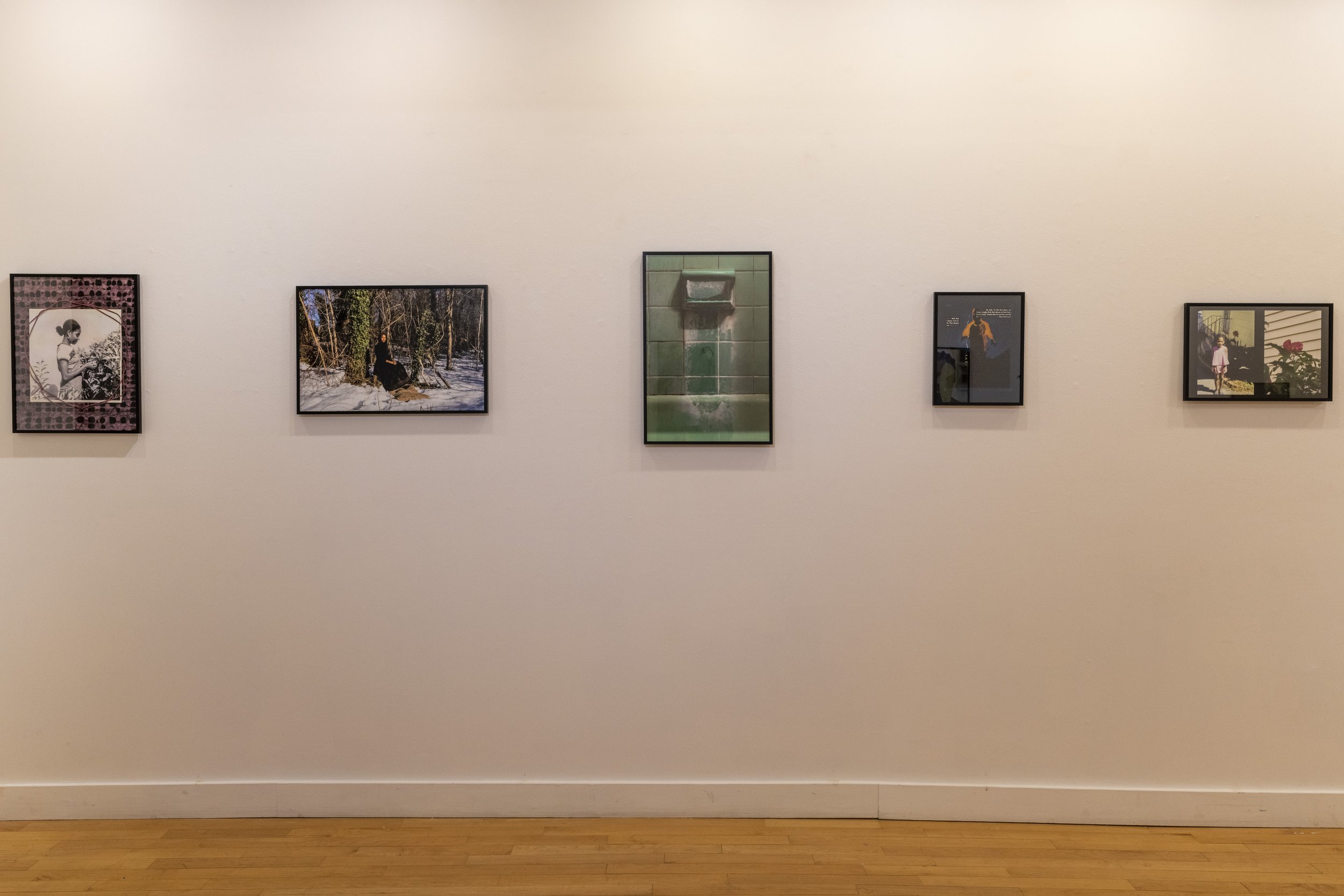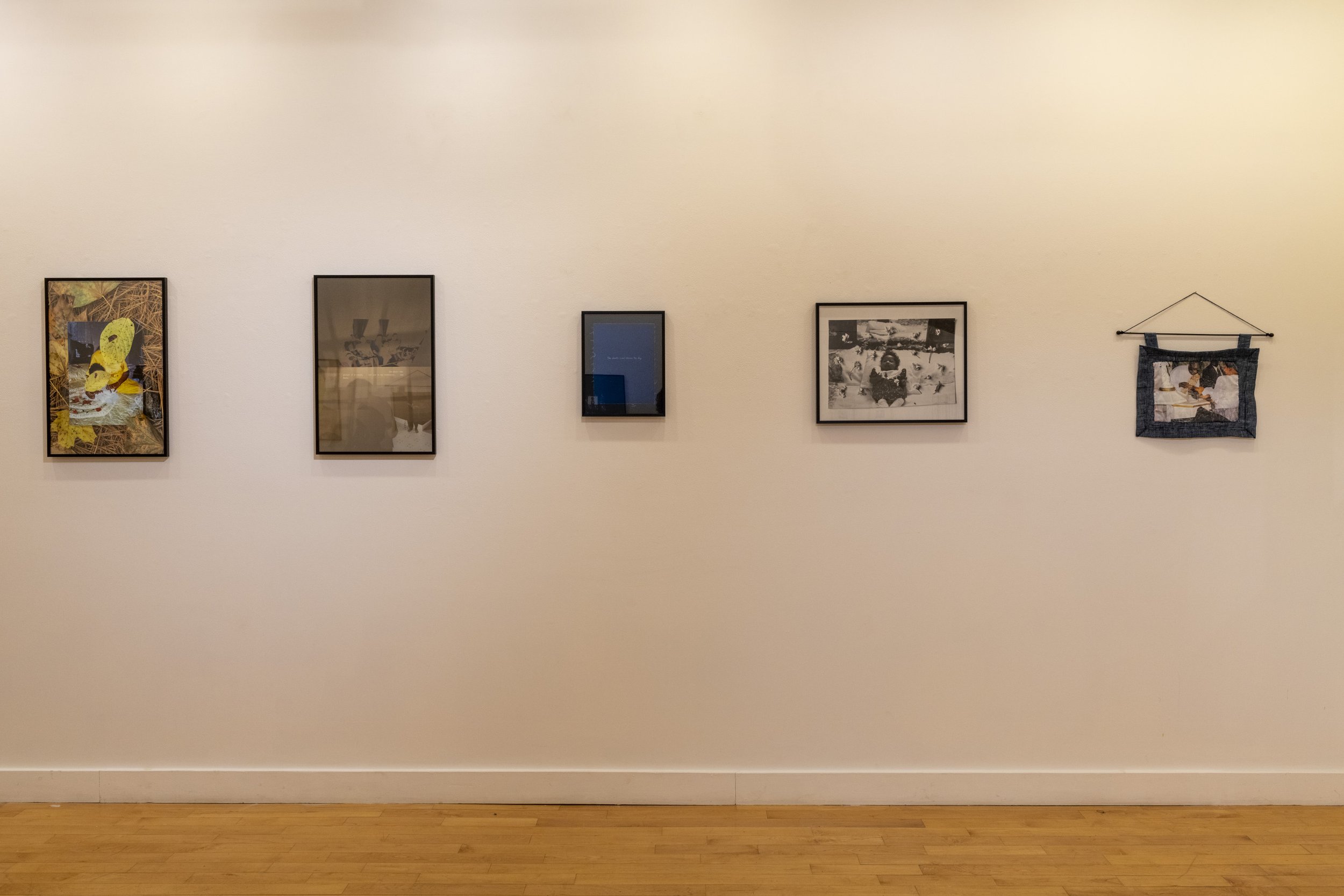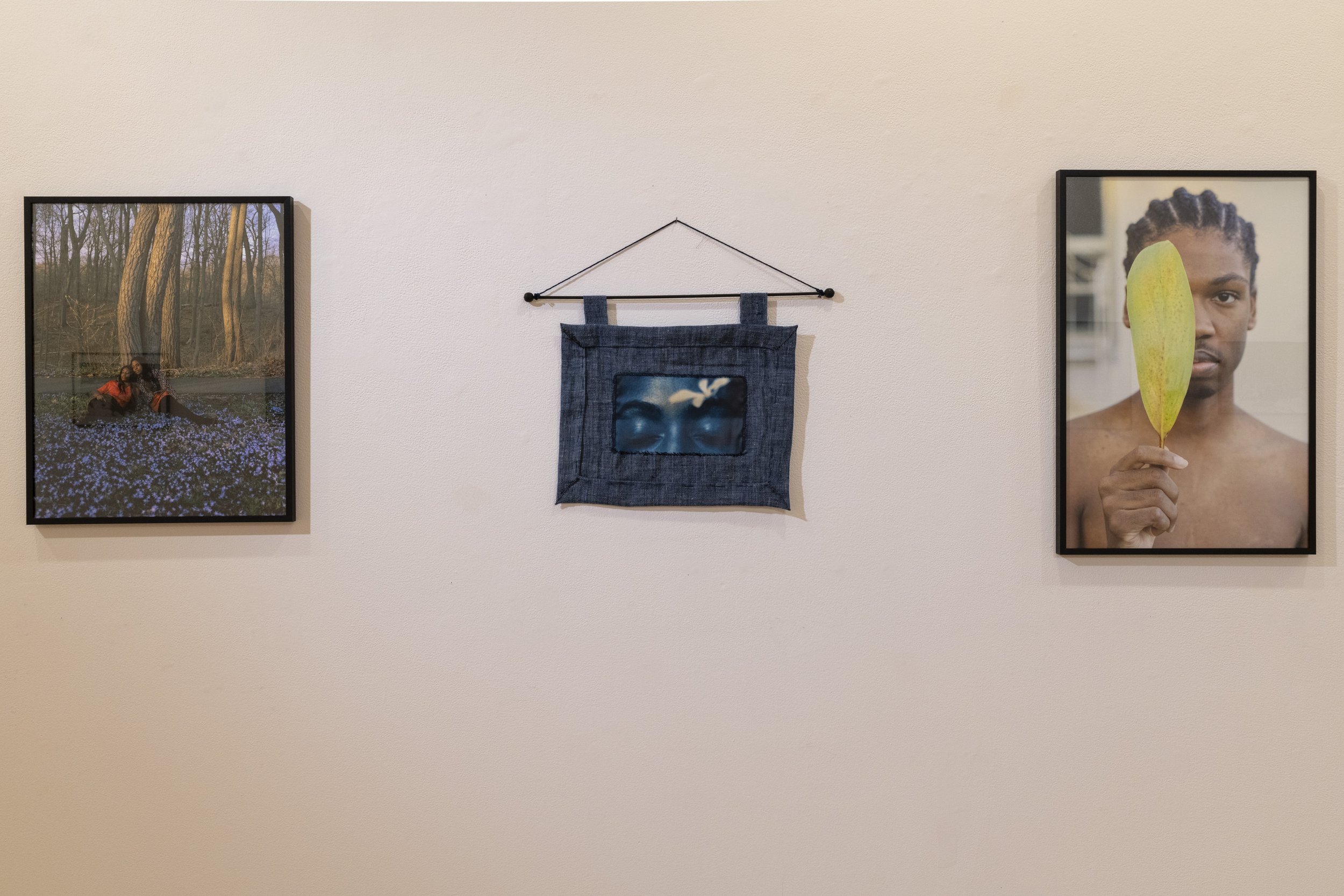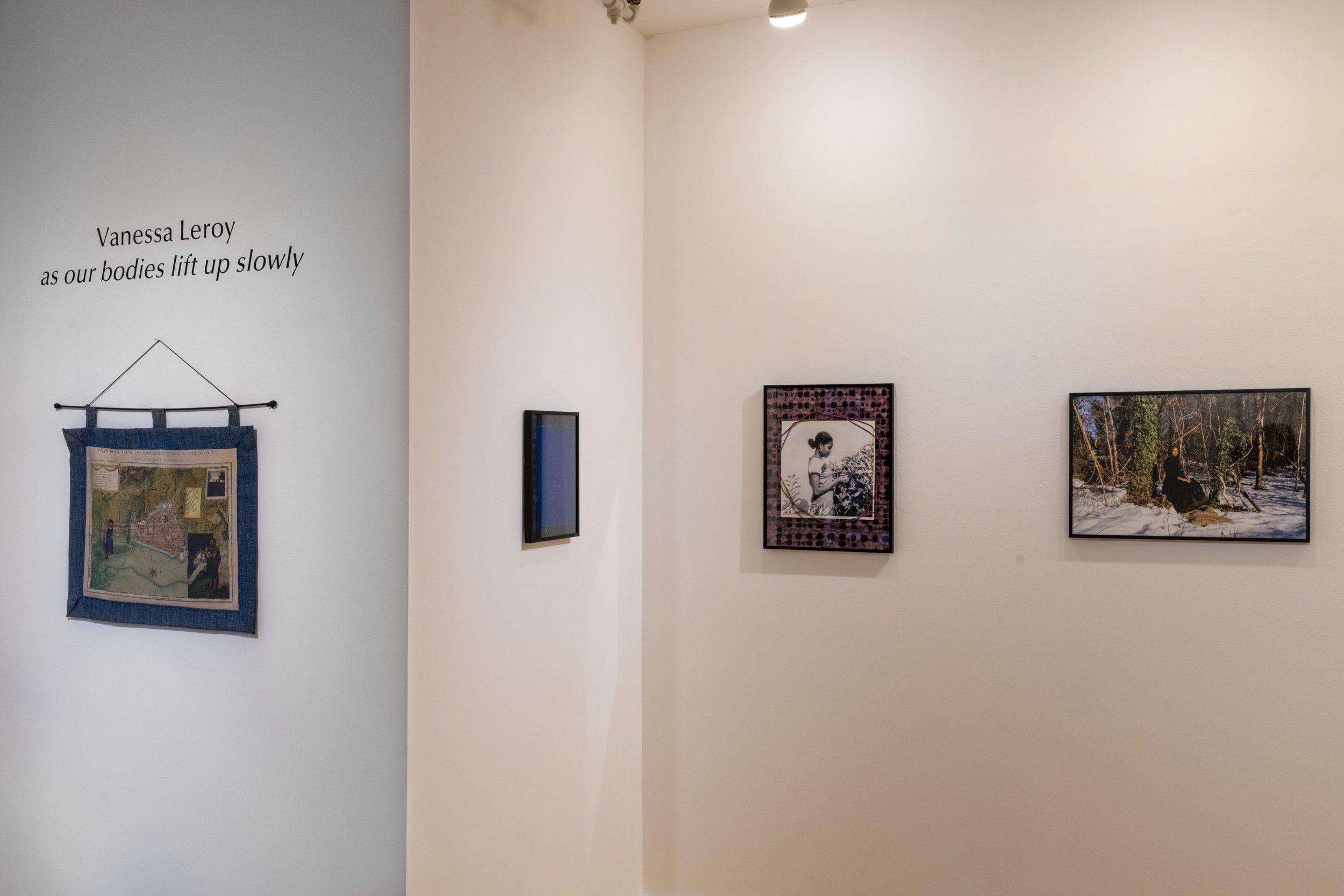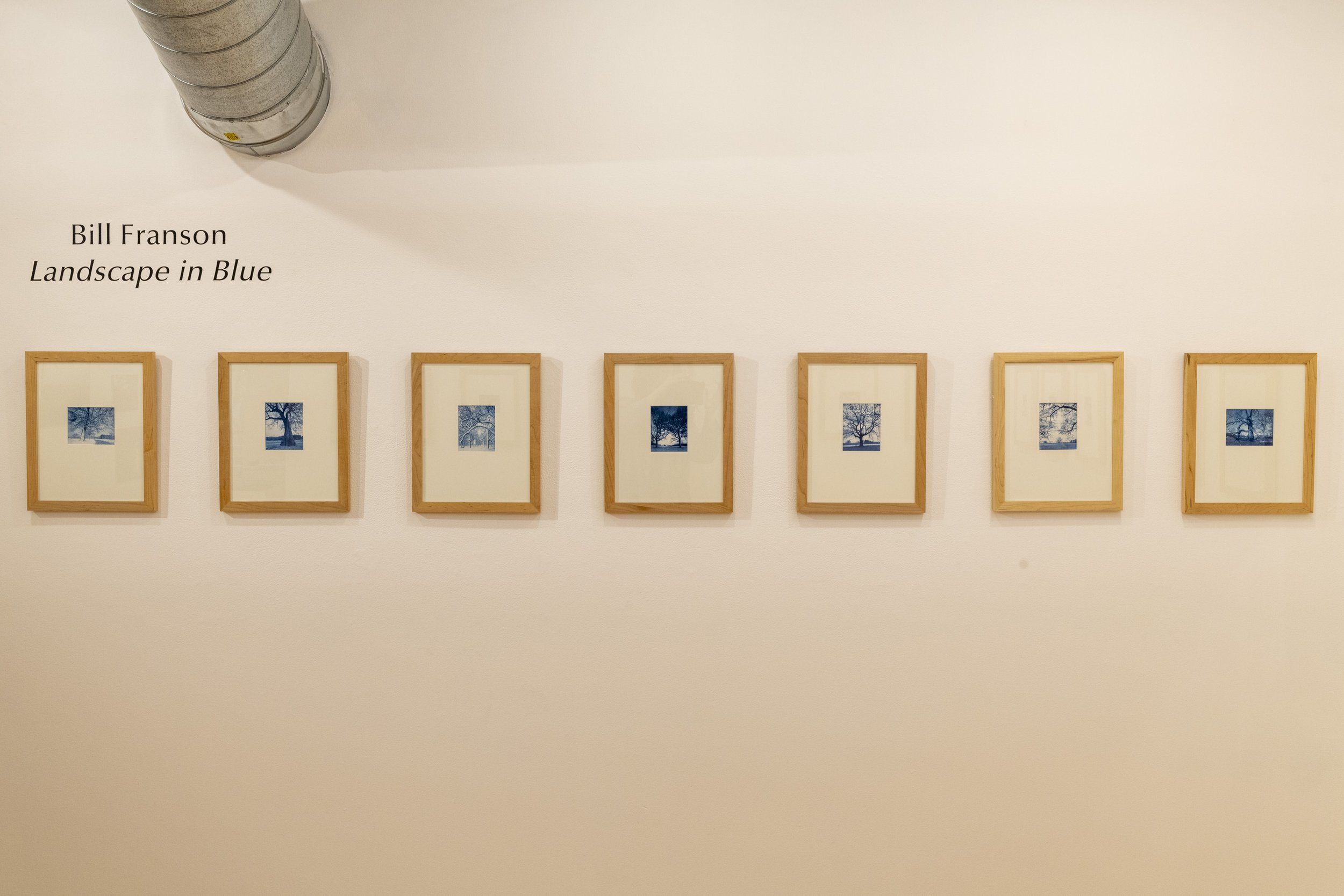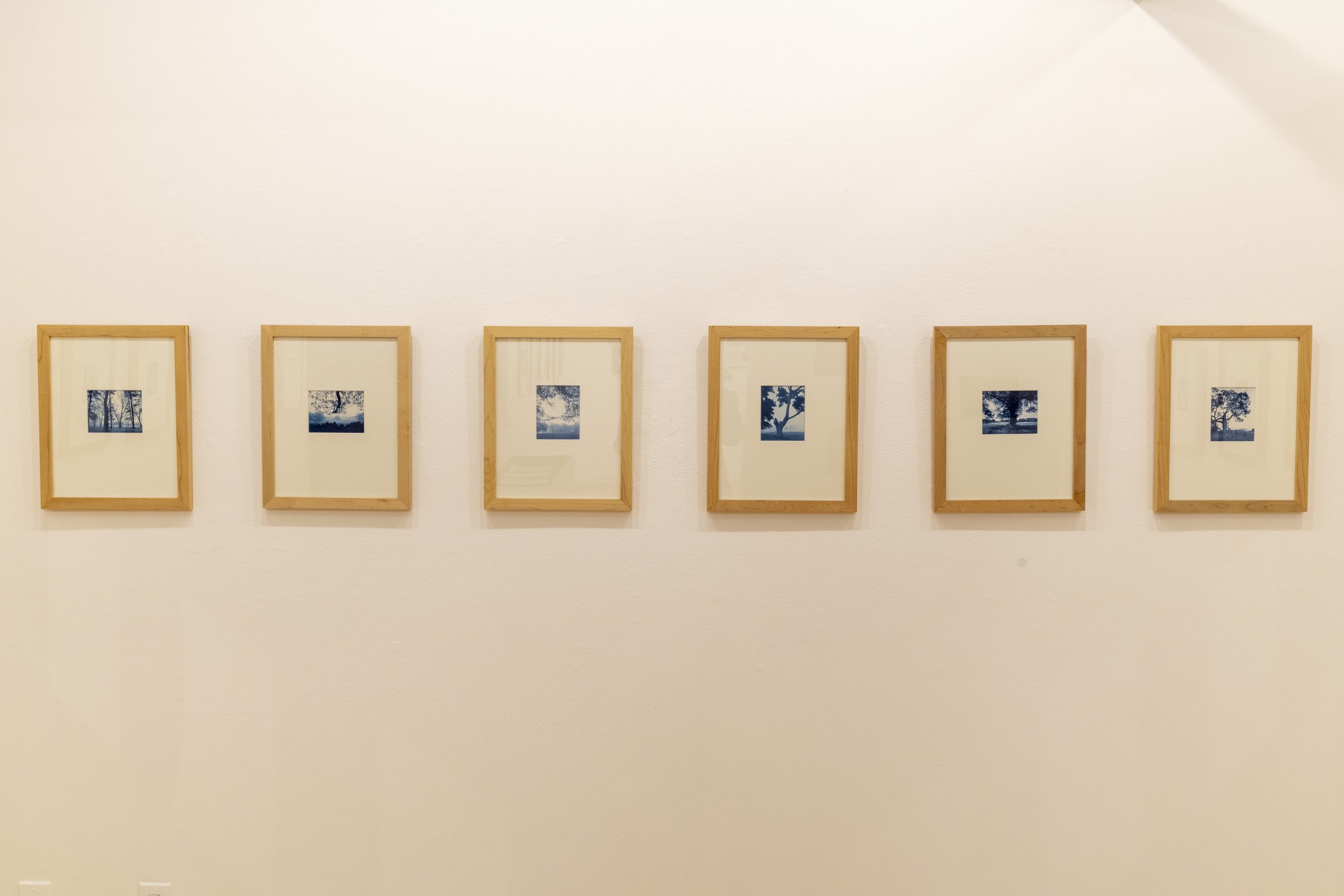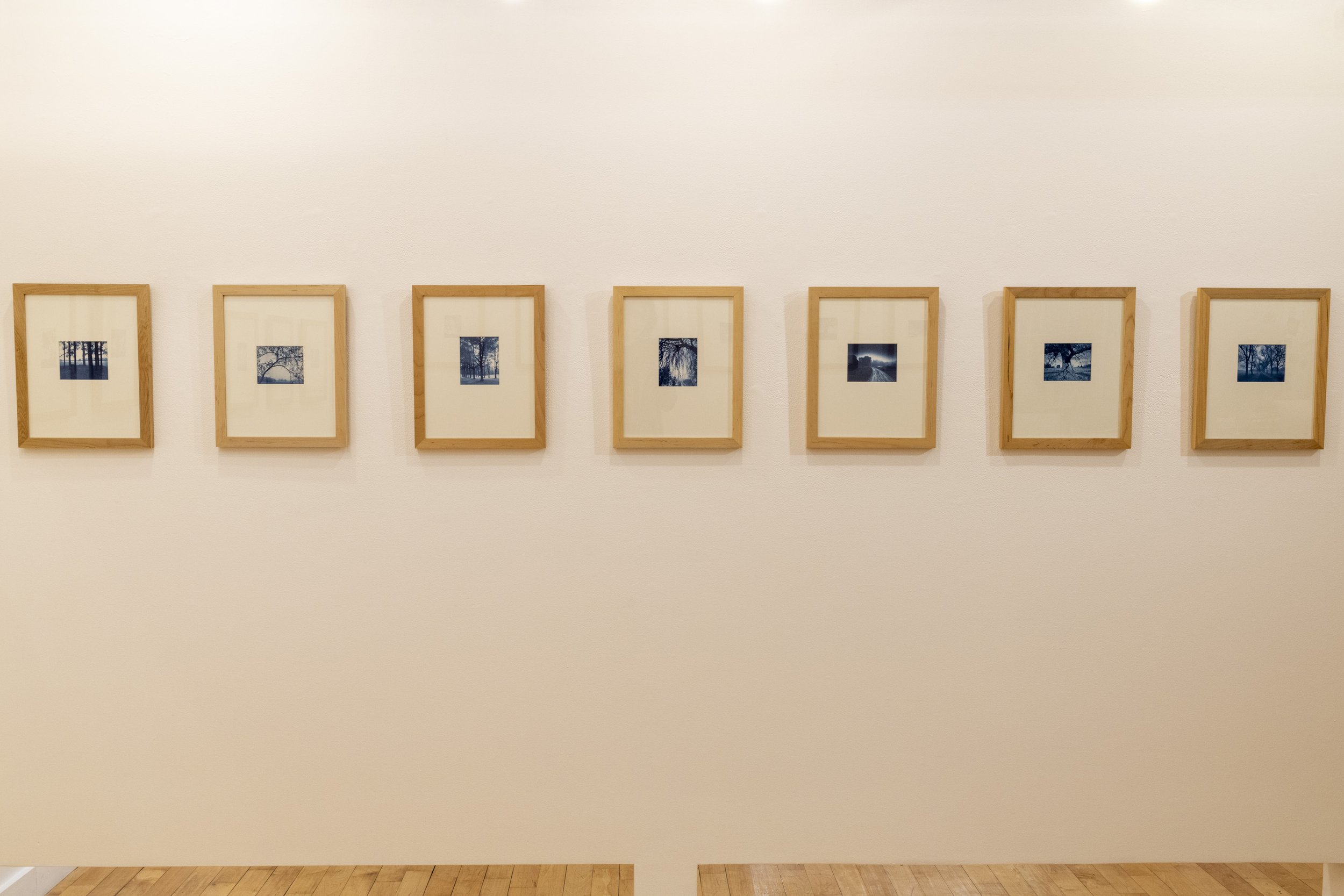Barbara Baum | Ghost Flowers
In June of 2020, I turned my attention to the garden.
I began my usual small watercolor studies. However, nothing felt the same. Covid was raging. The riot of color that I always loved in my garden did not resonate with what I was feeling. I cut some flowers and brought them inside. Working on ivory paper, I began drawing with various pencils, graphite and black and white watercolor. While the backgrounds and atmospheres grew ever darker and more textured, the flowers remained the ivory of the paper. Over months, the spaces lightened and color crept back in.
This work became my pandemic diary. Ghost Flowers.
Emily Belz | Duet & He Hid His Face Amid a Crowd of Stars
The rich history of the ponds, forests, and fields that surround my home animate my imagination as I photograph. Owned for generations by the same family, the land holds their history, and increasingly, my own. In the photographs that comprise Duet, I fuse together two long, color, vertical images of interiors and exteriors from this environment. Made between 2020 and 2022, these images reflect my own abstracted sense of time during those years, as well as the moments where boundaries of place — both internal and external—found merger or rupture.
Vanessa Leroy | as our bodies lift up slowly
The memory goes like this: we’re standing in the hallway of our childhood home. It’s evening time, and the windowless passageway renders us unable to see our own toes grazing atop the rough carpet fibers. Our blurred eyes look upwards to the kitchen that resides at the end, and the warm orange glow of the stove light begins to illuminate the path.
We walk into this orange light, looking down once more as our feet step over the metal guard ending the hallway carpet, transitioning into beige kitchen tile — that is where the memory ends. A twin memory, a re-memory; I share this with my brother. In this space where the truth is obscured ever so slightly, transcending the boundary of time, we met for a moment before we knew each other, before we knew what awaited us in this world.
There isn’t a lot of space for dreaming in an oppressive world, so I use photography as a tool to create worlds where I freely navigate the various facets of my life experience and identity as a black queer woman. In this body of work titled "as our bodies lift up slowly," I reflect upon my Haitian Catholic upbringing, the effects of generational trauma, and the relationships that have nurtured my growth. I weave between the past and present using archival family photographs, text, mixed media collage, and environmental portraits.
I draw inspiration from Octavia Butler’s novel Kindred, in which the young black protagonist Dana Franklin navigates a shifting timeline to uncover truths about her family lineage. I additionally employ text from Toni Morrison’s novel Beloved, which follows a formerly enslaved woman named Sethe whose home is haunted by the spirit of her deceased daughter, creating a situation where she and her living daughter are constantly swallowed by the overwhelming grief of losing years of life to brutal slavery and the
loss of a life that never got to grow.
I create photographs that speak to and comfort my younger self, and the versions of myself that struggled to carry the weight of having poor mental health and low self-esteem. In revisiting the past and imagining the future, I have created space for myself to heal
in the present.
I experience a commingling of grief and joy in the sifting of memories. For several summers my husband and I, and our young son, spent time living on a sailboat. The changing patterns of the light and the water, as well as the slowing down of time, became my photographic muses. Late one summer my father died very unexpectedly. I learned of his passing while caught in a storm at sea. Returning to the boat in this aftermath—to the water, the wind, the light, and the fog— I found a place to explore the contradictions of loss, to internalize them, and to frame them using my camera.
Bill Franson | Landscape in Blue
Established in 1638, Appleton Farms in Ipswich, Massachusetts is one of the oldest continuously operating farms in the United States. For generations the property was cultivated and shaped into a vibrantly diverse landscape. As a young boy wandering beyond the familiar bubble of my suburban home the Appleton woods and fields offered mystery and informed my imagination.
In January 2018 I re-visited the property with a large format film camera. I had no plan, just a desire to make good images. Truthfully, over-thinking the creation of a photograph has always been my nemesis, my best work realized through quick, intuitive responses. The 4x5 inch wood field camera I carried resists spontaneity. What began as a challenge soon became a weekly obsession. During this second encounter I was especially drawn to the arboreal landscape, it’s almost timeless pace, and by April I found myself committed to a year-long project.
Landscape in Blue is printed in cyanotype. Invented in 1842, the cyanotype process--based on the light sensitivity of iron salts--is the third oldest photographic print process. The intimacy of each small contact print in Prussian blue, real but not quite, dreamlike, mirrored my response to the landscape. Wandering this land in solitude again, listening, gazing, my sense of time would shift, expand. Memories would surface, like rivulets of water from an unknown source.
While working on this project I re-discovered the Ipswich-born artist Arthur Wesley Dow (1857-1922). It is known that he too “…loved the blue monochrome of cyanotype prints, delighting in their capacity to give reality a strange or otherworldly cast.” I do not know if Dow made any images on the Appleton estate. I do feel I share with him though a deep personal attachment to places one has known since childhood.

